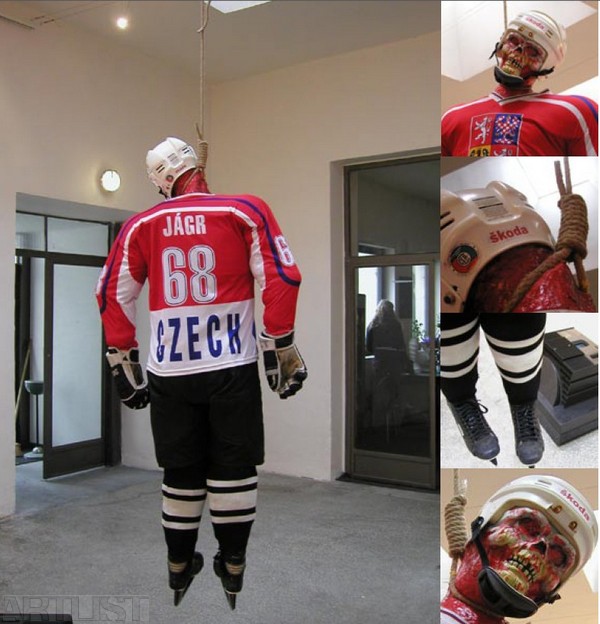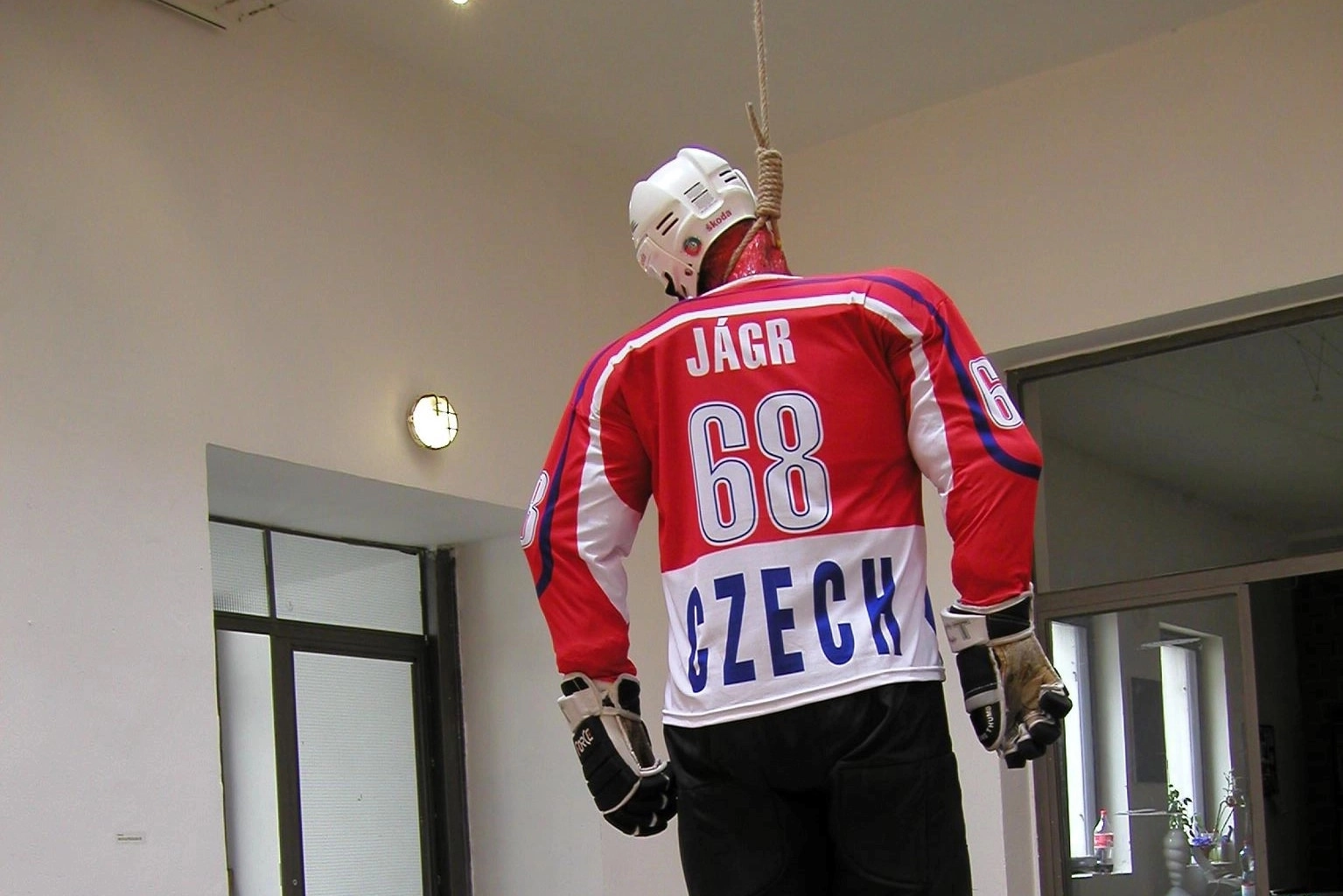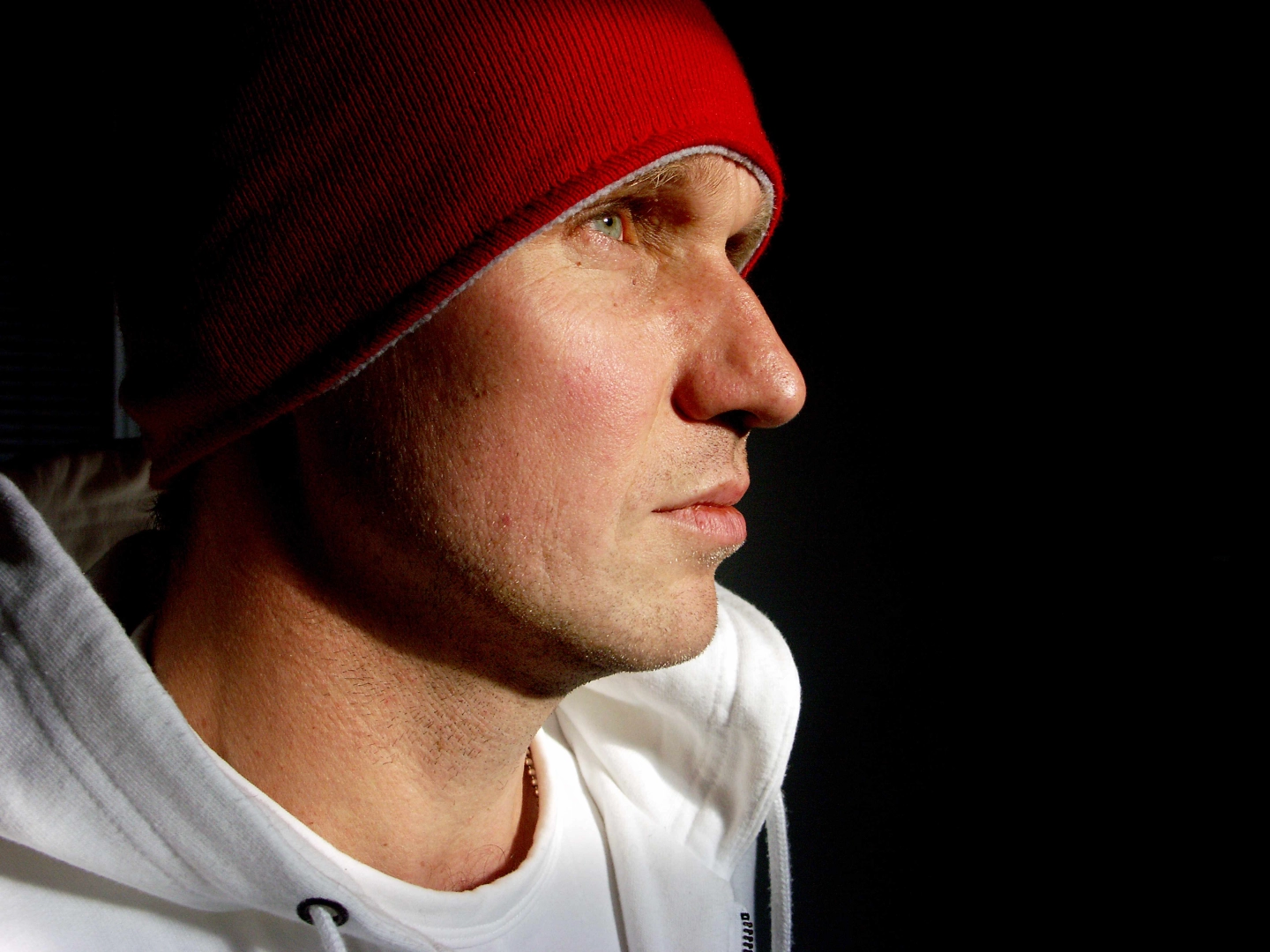One of the most controversial sports-themed works came out in 2004 from the minds behind the artist-activist group Guma Guar who prepared the installation Jardův konec (Jarda's End) as part of the May Days exhibition at the Home Gallery. The piece doesn't hold back. It's reckless. It breaks taboos.
Recall what is evident in the documentary photographs. Jaromír Jágr, a phenomenon of Czech sport since 1990, was portrayed as a skeleton in a national jersey, swinging from a noose. It is implied that he took his own life. According to the authors, it was an ironic response to the hopes placed on the national team captain during the hockey championships held in Prague for the first time in a while.
Jaromir Jágr has been considered a sports messiah who is capable of solving any problems his team may run into. He proved it as a player for Kladno, but especially when wearing the Pittsburgh Penguins jersey with which he won the Stanley Cup twice. The surrounding mania was probably unnerving for the artists and they assumed (or perhaps even wished) that he might fail, which was something unthinkable for the fans. It is outright forbidden to lose on home turf, and anyone who thinks otherwise is a renegade. The prophecy that the Czechs would lose came true during the exhibition’s opening on Wednesday, May 5, when the Czech team was defeated in the quarterfinals by the Americans that night. They were leading 2:0, Jagr scored the second goal, but the opponent managed to even out the score. The winner was not decided even during overtime and a penalty shootout was called forward: Jaromir Jagr managed to only graze the crossbar and the Czech team's hopes were extinguished because no player could beat the American goalie Ty Conklin. None of the millions of viewers at home expected such a defeat. The new multi-billion-dollar arena for more than 17,000 spectators was speechless. To this day, the silence still rings in my ears, all I can hear is the clang of the goalpost when the puck hits it. Nobody understood what had happened: up until the quarter-final game, the Czechs had swept their opponents six times, with a particularly impressive 6-2 victory over Canada, who eventually succeeded in the final by beating Sweden.

However, the future soon proved the artists wrong. Jaromir Jagr did not harm himself, he bore the defeat with stoic calmness: as if he knew something others did not. He had already led the Czech national hockey team to win gold at the World Cup in Vienna in 2005 and then once again in Cologne in 2010 after a memorable triumph over Russia. The year is 2023, Jagr is over 50, but he is not done with hockey. Milan Mikuláštík, one of the key figures of the Guma Guar group, is no longer the rebel he was twenty years ago; he has even become involved in institutionalised art: since 2009, he has been curating the programme of the National Technical Library Gallery in Prague, and now he is the head teacher of the Painting 2 atelier at the Academy of Fine Arts, the most classical medium we know...





